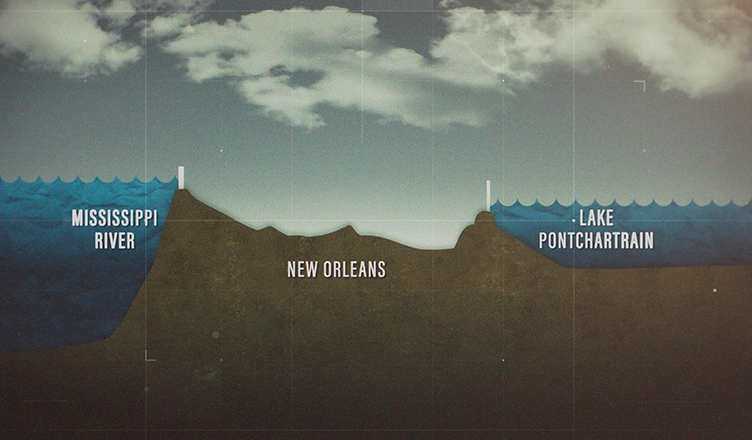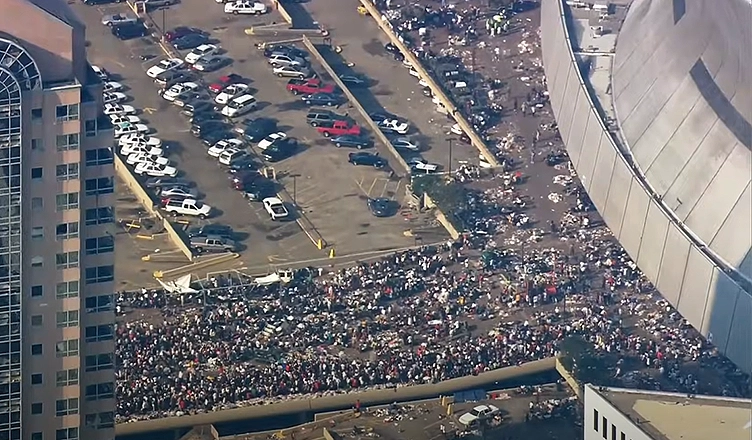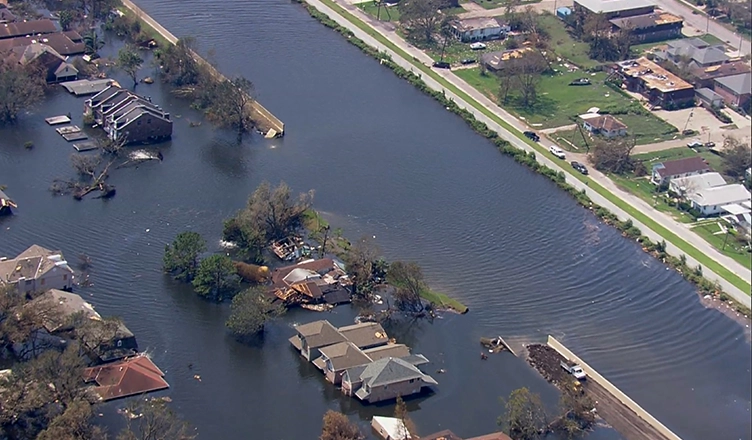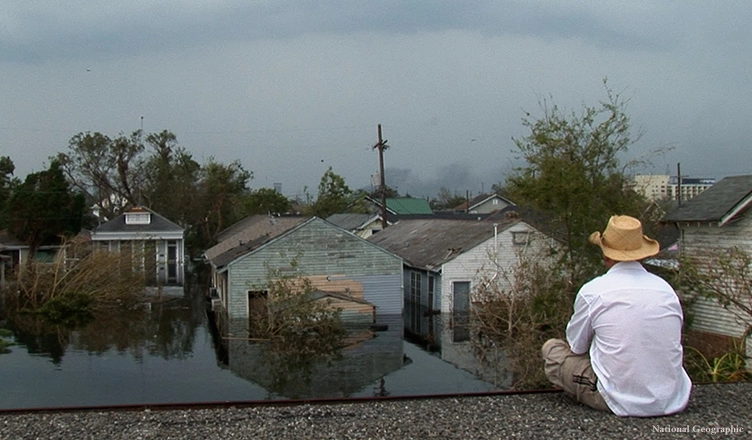There was fear, chaos, and desperation as Hurricane Katrina closed in on New Orleans two decades ago. Now, as the 20th anniversary of the storm approaches, survivors are recalling what they witnessed in the National Geographic docuseries Hurricane Katrina: Race Against Time.
The five-part series is directed by Traci A. Curry, and produced by Ryan Coogler’s Proximity Media, and Simon and Jonathan Chinn of Lightbox company.
“We went through something really, really tragic,” then-New Orleans resident Shelton Alexander told Urban Hollywood 411 in a recent interview via Zoom.
Alexander is featured prominently in the docuseries, which premieres Sunday, July 27, and focuses on government incompetence, horrors, heroism, and the “Katrina diaspora” that followed one of the most devastating natural disasters in U.S. history.
Also Read: John Legend Shines Spotlight on Incarcerated Firefighters Who Battled LA Fires
The storm made landfall along southeastern Louisiana on Aug. 29, 2005. The National Weather Service said it was a category four hurricane at the time, with winds of up to 145 MPH, leaving a trail of damage and death.
Renowned hurricane scientist Ivor van Heerden was deputy director of Louisiana State University’s Hurricane Center.
Van Heerden says in the series, “I tried to warn about something like Katrina for years.” But federal and state leaders ignored his warnings, and Louisiana wasn’t prepared.
Roughly 50 percent of New Orleans sits below sea level and the city is prone to flooding. A system of levees, pumps and walls were designed to keep water from surrounding lakes and the Mississippi River out of the city.

Van Heerden says the flood control system was deeply flawed and powerful people knew it. He blames “shoddy design” by the U.S. Army Corps of Engineers as the reason the levees crumbled during Katrina and the city filled with water like a bowl.
The storm struck predominantly Black neighborhoods in New Orleans, prompting some to say racism was a factor in the government’s inadequate response.
Many people fled once then-Mayor Ray Nagin declared a mandatory evacuation order, although he’s criticized in the series for waiting too long to order residents to leave.
Alexander is shown in the series trying to drive out of town with his family.
“The traffic wasn’t budging,” he tells us in our interview.
Frustrated and running out of gas, he turns around and goes to the Superdome, where Nagin says people with nowhere else to go can take refuge.
Alexander is part of the Katrina diaspora and no longer lives in Louisiana. He details what he witnessed when the storm arrived.
“I knew the Superdome was a shelter of last resort. And I was just like, ‘Well, let’s take our chance there. Like, what could go wrong? Well, something obviously went wrong,” he says.

The Superdome fills with people. It’s hot inside, getting dirty and chaotic.
“There’s so many breakdowns. Like you asked, ‘Who can I speak to? Who’s in charge?’ Nobody could tell you who was in charge,” Alexander says.
Rumors begin to spread of heinous crimes. While Alexander says it’s difficult to know what’s true. One thing he can confirm, a man lost hope and took his life.
“There are some people like the guy, when I first got there, he committed suicide. That is the truth,” Alexander recalls. “He jumped over the top. He landed down there. Everybody was freaking out because of that.”
Louisiana is among the poorest states in the nation, second only to Mississippi, according to the charity End Poverty Now.
Without cars, family or friends to help, some low income, elderly and disabled residents are left in their homes to die. The docuseries blames “ineptitude at all levels of government.”
The series shows 911 operators taking calls from people pleading for help, but there aren’t enough first responders to reach everyone.
Even if there were, they wouldn’t know where to go because the waters have lifted homes from their foundations and they’re floating away with people inside.

In one shocking scene, bodies float through the streets. In all, the storm claimed an estimated 1,833 lives, according to the National Weather Service.
Good Samaritans grab boats and launch their own rescue operations, joining the U.S. Coast Guard, police and firefighters as they race to pluck people stranded on rooftops and porches.
A desperate mother begs a female Coast Guard officer to take her baby. The officer says she doesn’t have a harness small enough to secure an infant. The officer grabs the baby anyway, holds the child in her arms, and prays it doesn’t fall as they are lifted into a helicopter.
“We expected FEMA to come in, but there was no help,” a city employee recalls.
Rescuers take evacuees to the Superdome, where nightmarish conditions are unfolding. In our interview, Alexander says people start to panic as stories about murders and children being raped spread.
“Some elderly people sat in chairs for days and days at a time, like never getting up to use the restroom. So, they had to do it right on themselves,” he recalls. “I gave one lady a pair of jeans, like my favorite pair of jeans, and she was like, ‘I had to use the bathroom on myself.'”
Alexander used his video camera to record what he saw, knowing the tragedy should be documented. Despite the dire conditions, he recalls seeing signs of hope.
“It was nasty and it was disgusting. But however, even with that, we wasn’t like, beating on each other and fighting… we still have some type of dignity, some type of pride despite our conditions, I think we did the best we could,” he says.
He remembers people singing hymns and praying together.
“[We want] to tell the story, because we don’t want it to happen again,” Alexander says, adding, “films like this just bring more awareness.”
Hurricane Katrina: Race Against Time premieres Sunday, July 27 at 8/7c on National Geographic with three back-to-back episodes. All episodes will be available to stream July 28 on Disney+ and Hulu. You can find more details on the series here.
Discover more from Urban Hollywood 411
Subscribe to get the latest posts sent to your email.






